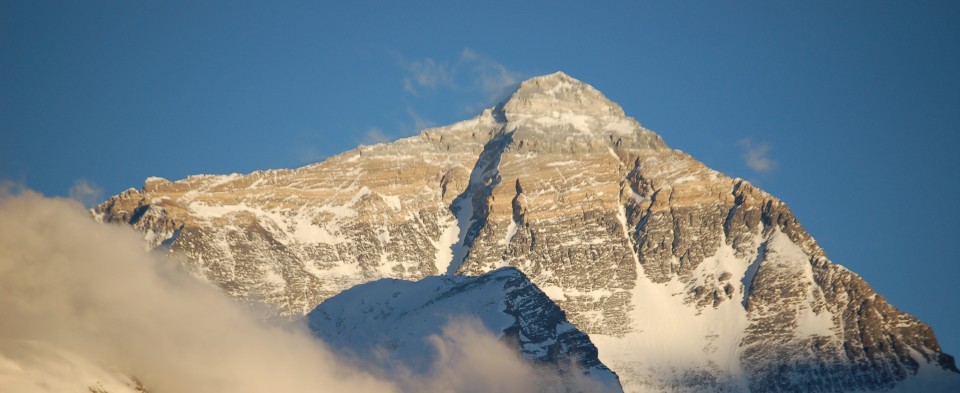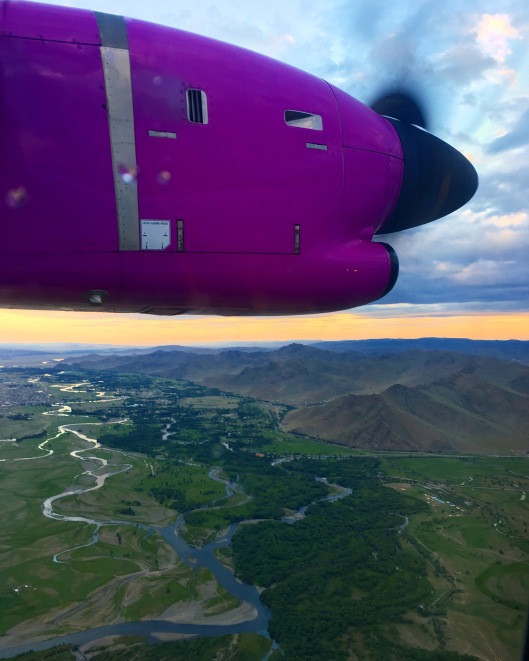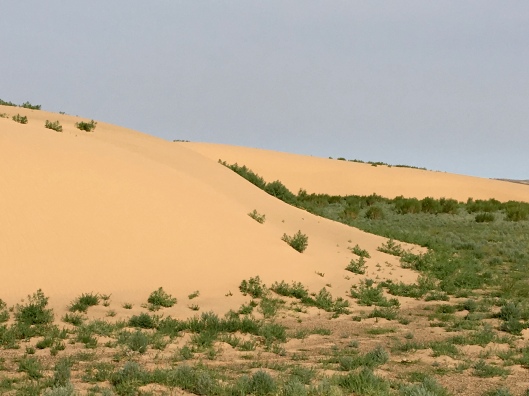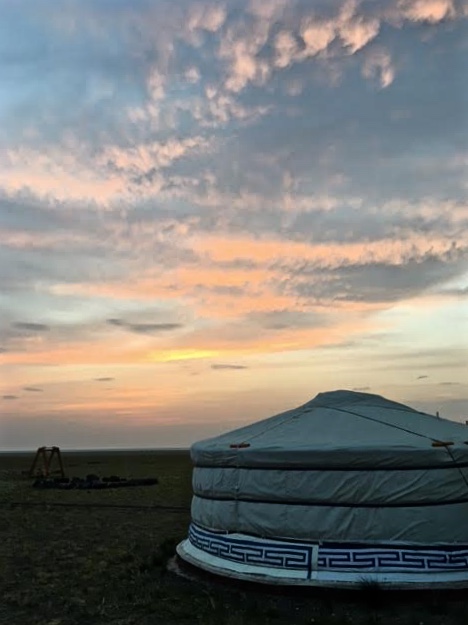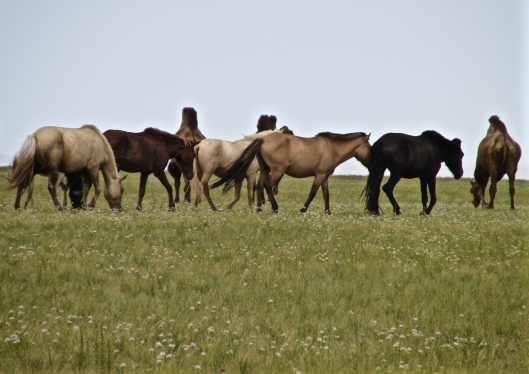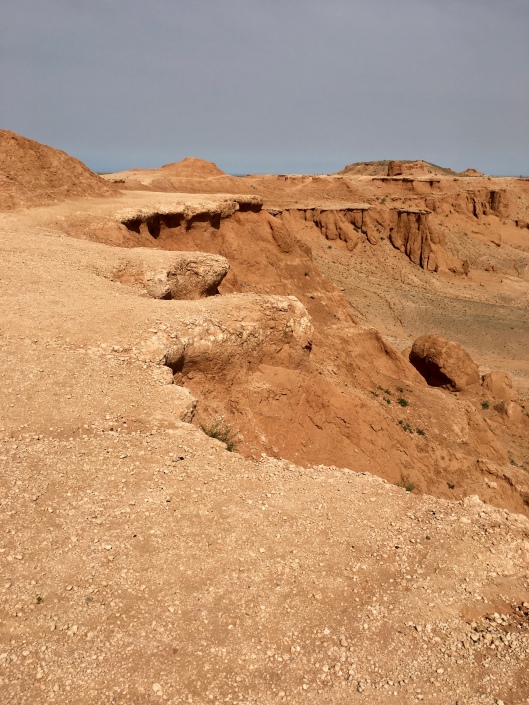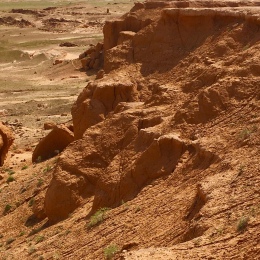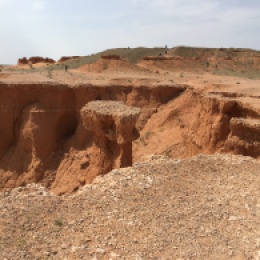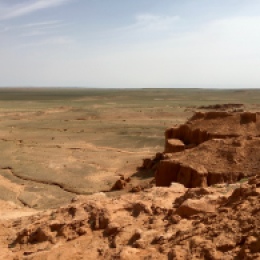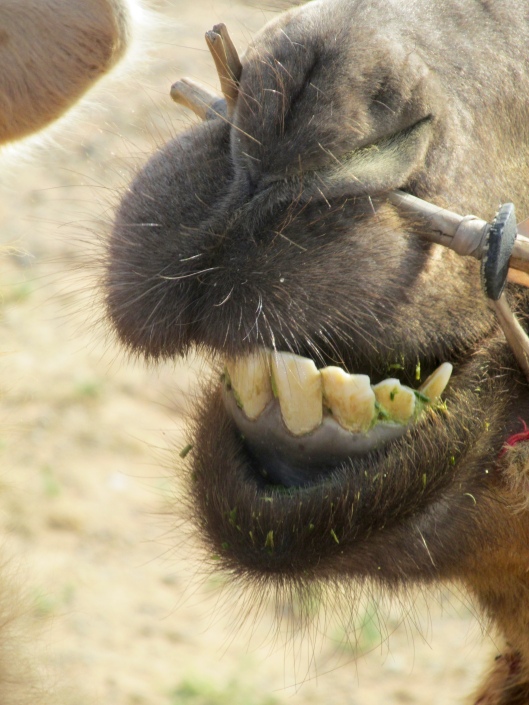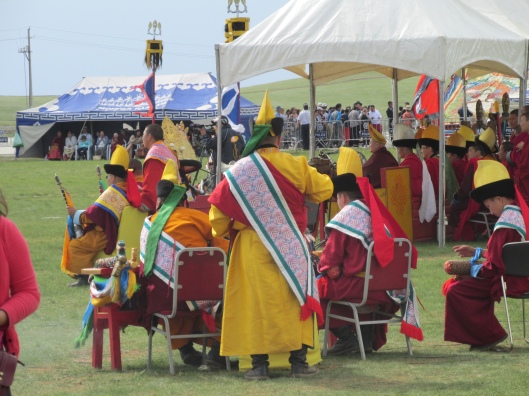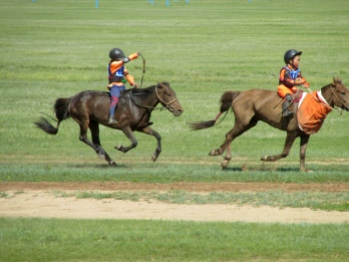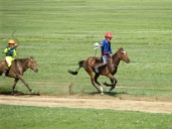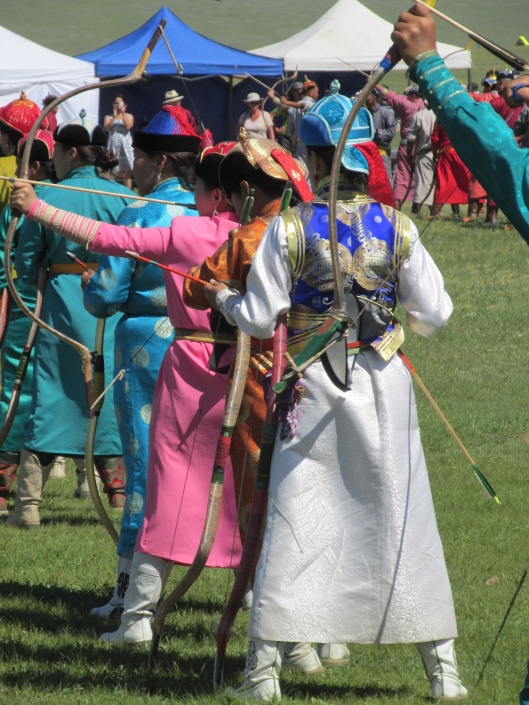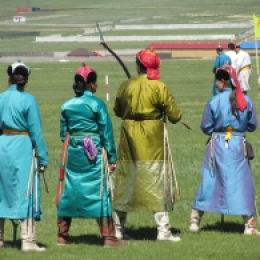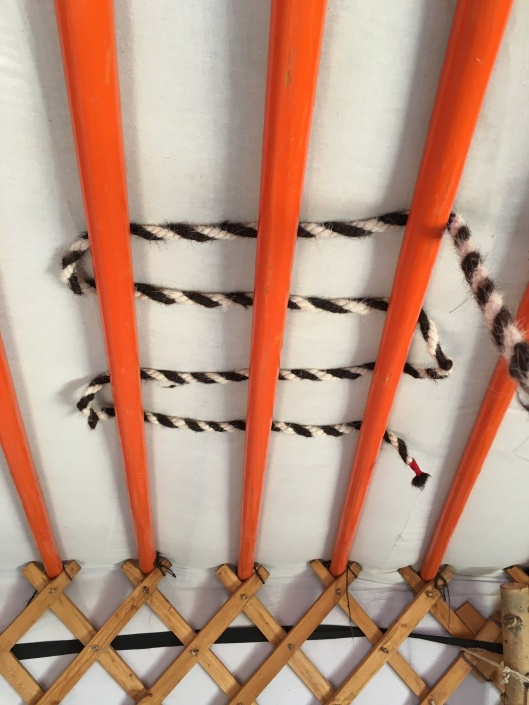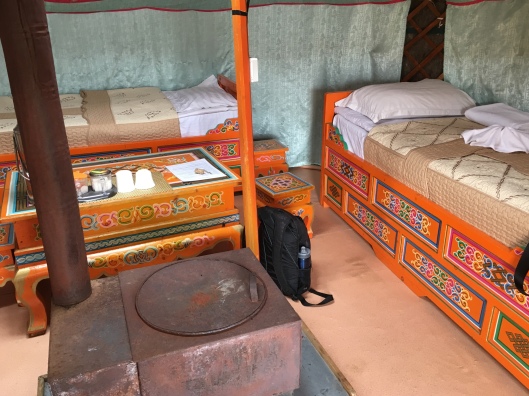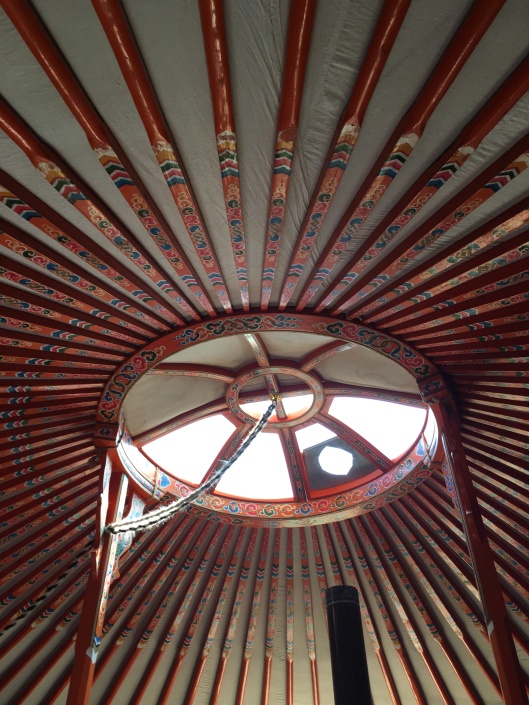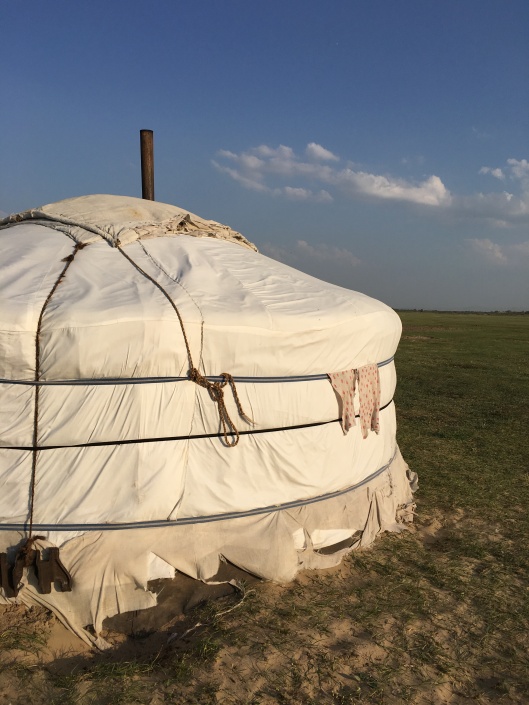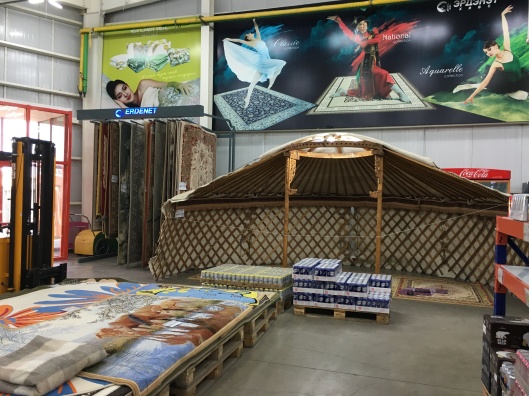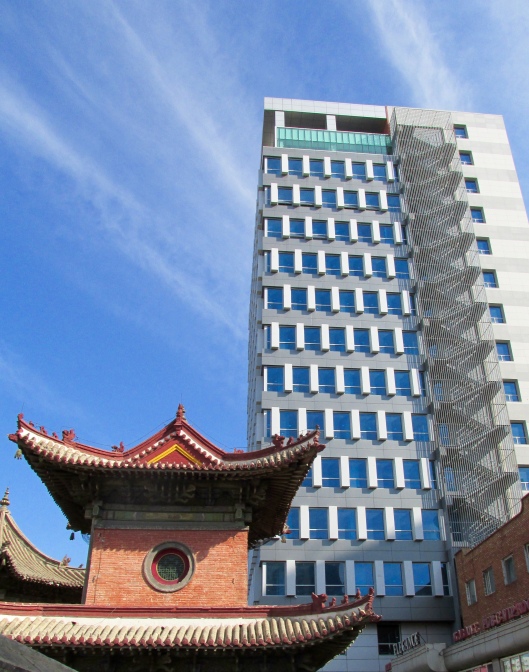I’ve always had a fascination with the word “steppe,” a term I’d read in various books to describe the land over which impossibly exotic characters ranged – legions of Russian soldiers, swarms of Genghis Khan’s archers on horseback, camel trains of nomads traversing a vast, empty plain. I pictured the steppe as a massive shelf, an unbounded plateau taking a giant stride down from Russia and Siberia into Central Eurasia. I might even go so far as to say that I went to Mongolia solely to see the steppe, with its grasslands and treeless plains that spread out for miles and miles under massive blue skies. I saw the foray into this land as a rare opportunity to step off the grid and into the pages of history right up to this day.

In my last post, I noted my surprise at the newness and modernity of Mongolia’s capital, Ulaanbaatar. While I took pleasure in getting to know that city, my real joy in Mongolia was heading out to the steppe land west of UB. With one of the lowest population densities on earth, Mongolia is literally wide open, and I wanted to get out there and breathe in the vastness and, maybe, see a little of the life that takes place there, a life that feels far removed from that in the city.

The Mongolian grassland plateau is part of the biggest steppe region in the world, one that stretches from Eastern Europe (Ukraine) through Central Asia – a number of the ‘Stans (Kazakhstan, Turkmenistan, and Uzbekistan), Russia, and others. While there are now paved roads connecting most of the country’s provinces, the majority of roads on the steppe are bouncy dirt paths, often with no discernible lanes or traffic patterns.

The verdant plains of summer spread out like ruched fabric, rising and dipping, folding and wrinkling like thick, crumpled velvet. Often, the greenish-yellow moors are framed by brown and purple mountains, unfolding in layers for miles on end. The vistas are like watercolor paintings, gradations of color and light stacked from foreground to background until they melt into the heavens.


Little white gers off in the distance dot the landscape, and herds of animals roam freely, the sheep with the goats, the horses alongside the camels.


Unlike the leap into the 21st century that UB has taken in recent years, much of life on the steppe takes place just as it has for centuries, with people living in harmony with the land. Nomadic families move with the seasons, packing up their gers and their animals at least four times a year to find new pasturelands. In summer, access to water is critical, while winter brings a need for grasslands with minimal snow cover. In spring, the herders look for early flora to nourish the animals before birthing time arrives, and in fall, they seek out later-growth foliage to fatten up before winter comes around again.
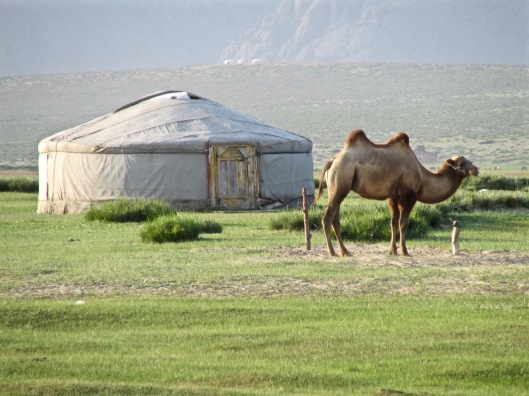
Both the livelihood and sustenance of these nomads depend on their animals – primarily horses, camels, cattle, sheep, and goats. The Mongolian diet is heavily based on meat and dairy products, and days revolve around animal care and putting up food for future seasons. On a visit to a wonderfully engaging nomadic family, we helped milk the mares and the cows, then cut huge blocks of soft cheese into smaller pieces that were dried on the roof for winter consumption.
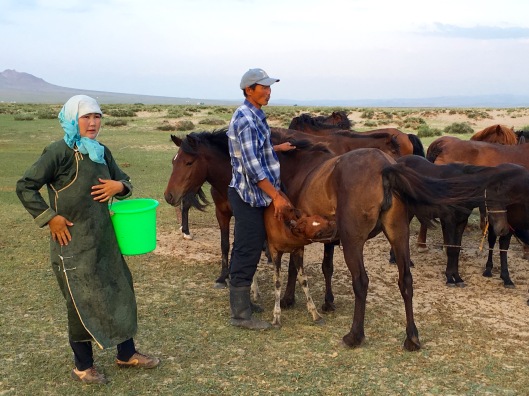
We drank airag, a fermented mare’s milk, nibbled on mutton dumplings, and savored a creamy rice pudding made with the cow’s milk we had helped procure minutes earlier. Animal fur, hair, and skins can be sold for use in the city as rugs, the famous Mongolian cashmere, and other products as a way to earn money to buy agricultural staples the nomads cannot grow (rice and flour among them), animals to breed (the most expensive, a camel, costs about $750), or supplies, like the gers themselves ($1000 or so).
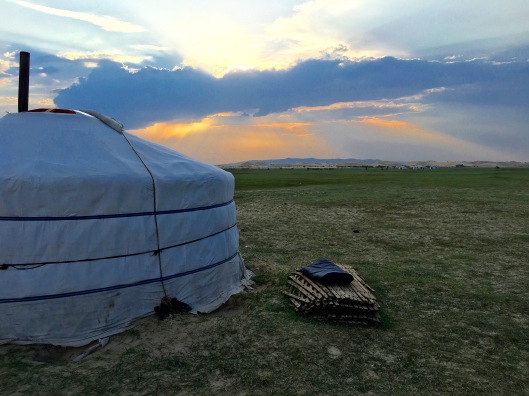
Traditional herding life is likely to change and fade out in coming years as pressures to join the global economy increase and as younger generations develop ambitions beyond a life in the country. The families who still make their home on the steppe may live simply and freely, but they take small bites of the world beyond. They use solar panels for energy in their gers, their children go to school (which is compulsory), and, of course, they own cellphones, which are almost as attached to their ears as they are anywhere else! The darling girls I bonded with one evening knew their way around an iPhone – insisting we take selfies together and then taking (many, many) videos of me riding their horses.

I didn’t get enough time on the steppe. I understand the difficulty of taking people out into such unpopulated, unsupported areas and I get that most people can only take the ger camps for so many nights before craving a real shower and some wifi! But I could have stayed much longer, waking at dawn to see horses wandering through camp, bouncing down the dirt roads into the green suede hills, stopping to photograph a shimmering, lemon-lime wheat field or a posse of Bactrian camels, meeting the industrious and endearing local people, and reclining outside my tent at midnight to see the entire Milky Way clouding up a night sky unpolluted by other light sources.

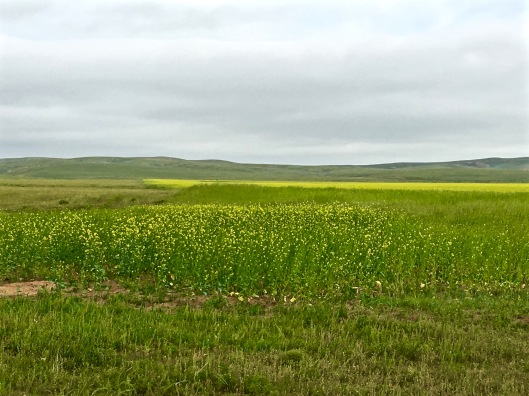

The steppe was a rare treat, a dream come true, a step out of time and place, a pause button in the universe that I needed to see and experience for myself. If history holds, I will crave a return someday soon, and I will add Mongolia to the list of places I’ve felt compelled to revisit.


